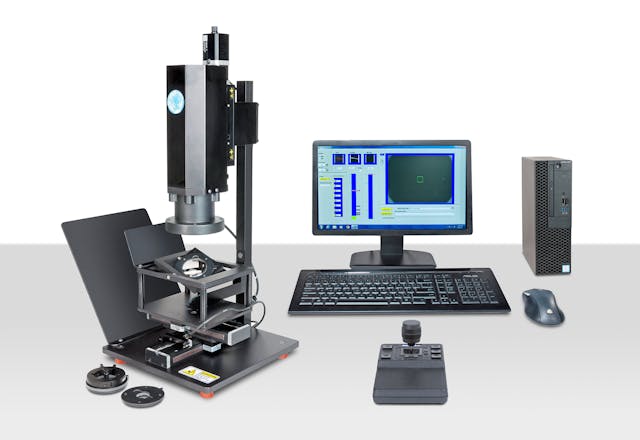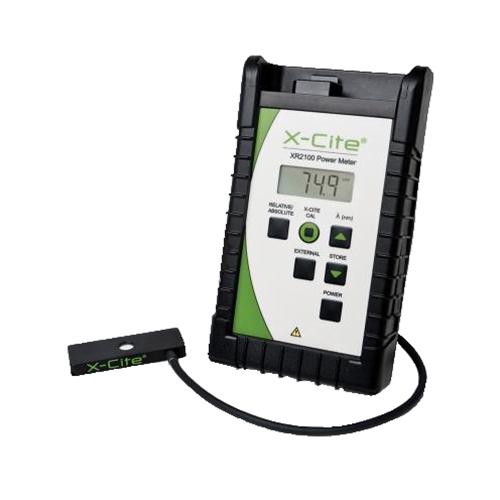Case studies of optical measurement in automotive quality control
Case studies of optical measurement in automotive quality control
Blog Article
Comprehending Exactly How Optical Dimension Systems Enhance Quality Assurance Processes
When you're looking to enhance high quality control processes, recognizing optical dimension systems is crucial. Allow's explore the key aspects that make optical dimension a game-changer in top quality monitoring.

The Principles of Optical Dimension Solutions
Optical measurement systems play an important role in guaranteeing item high quality across various industries. These systems make use of light-based modern technologies to collect accurate data concerning physical features, such as measurements, surface coating, and shade. By utilizing lasers, video cameras, and sensors, you can achieve non-contact dimensions that lessen the danger of damaging fragile products.
Recognizing the basics of these systems is fundamental for reliable quality assurance. They operate principles like refraction, representation, and diffraction, permitting you to examine various products and shapes. The accuracy and rate of optical measurements make it possible for real-time monitoring, which aids you identify issues early in the production procedure.
Furthermore, these systems can be incorporated with software application for boosted data evaluation, creating a detailed high quality management technique. By leveraging optical dimension systems, you not only improve productivity however additionally guarantee your items meet rigorous high quality standards, inevitably improving consumer contentment.
Kinds of Optical Dimension Technologies
Numerous sorts of optical measurement modern technologies are available, each developed to fulfill details requirements in top quality control. You might encounter laser triangulation, which measures range by examining the angle of a mirrored laser light beam. This modern technology is perfect for catching exact measurements in 3D room.
An additional alternative is structured light, where you predict a series of light patterns onto a surface area to develop a detailed 3D model. This method works well for complex geometries.
Then there's interferometry, which can discover minute modifications in surface profiles by examining the disturbance patterns of light waves. This is particularly beneficial for applications needing nanometer precision.
You may also consider optical comprehensibility tomography, which provides high-resolution photos of inner functions without harming the things. Each modern technology serves various demands, so picking the appropriate one is essential for attaining highest quality control outcomes.
Secret Benefits of Optical Measurement in Top Quality Control
When it comes to top quality control, leveraging optical dimension innovations can significantly boost precision and effectiveness. These systems allow you to capture thorough dimensions quickly, reducing the moment needed for examinations. You'll see that optical measurements can identify also the smallest issues that may go undetected with standard methods, making certain product consistency.
Furthermore, using optical dimension systems frequently brings about minimized waste and revamp, as you catch concerns early in the production procedure. You'll also value the non-contact nature of many optical approaches, which lessens damage to delicate parts during analysis. This flexibility allows for a more comprehensive variety of applications throughout various materials.
With real-time information collection, you can make informed decisions promptly, streamlining your quality control processes (optical measurement). Eventually, including optical dimension into your high quality control approach not only improves performance but likewise boosts consumer complete satisfaction by providing higher-quality items continually
How Optical Measurement Solution Improve Precision and Accuracy
Optical dimension systems boost accuracy and precision by enhancing measurement resolution, enabling you to identify also the tiniest variations. With real-time data analysis, you can make immediate modifications and decisions, ensuring your procedures remain on track. This combination not only enhances product top quality but also enhances your quality assurance initiatives.
Boosted Dimension Resolution
By leveraging innovative technologies, optical measurement systems greatly improve dimension resolution, bring about boosted precision and accuracy in quality assurance. These systems use high-resolution cams and innovative formulas to record minute information that typical approaches commonly miss out on. You'll observe a considerable difference in the quality of dimensions, enabling you to determine even the least inconsistencies from specs. This enhanced resolution helps eliminate uncertainty, supplying you with data that's both workable and trustworthy. As a result, you can make more educated decisions and maintain tighter tolerances in your procedures. Ultimately, enhanced dimension resolution not just improves product top quality however also optimizes source usage, ensuring that you fulfill consumer expectations consistently.
Real-Time Data Evaluation
Although typical measurement systems commonly count on delayed data handling, real-time information evaluation in optical dimension systems transforms the i thought about this method you check high quality. By providing instant feedback, these systems allow you to spot variances and inconsistencies as they occur, permitting quick rehabilitative activities. You'll experience better precision since you can instantaneously contrast dimensions versus predefined requirements. This gets rid of uncertainty and minimizes the danger of flaws sliding with. Furthermore, real-time data assists you build up important insights in time, tweak your high quality control processes. With this advanced technology, you'll enhance both precision and performance, ensuring that your items constantly satisfy high requirements. Embrace real-time evaluation, and enjoy your high quality control initiatives rise to brand-new heights.
Integrating Optical Dimension Into Existing Quality Control Processes
Incorporating optical measurement right into your existing high quality control procedures can substantially improve accuracy and effectiveness. By incorporating optical dimension systems, you can streamline information collection, decreasing human mistake while enhancing the rate of evaluations. Beginning by why not find out more identifying bottom lines in your assembly line where optical dimensions will certainly offer one of the most value.
Following, educate your team on the brand-new technology, ensuring they recognize exactly how to make use of the systems effectively. This training will certainly help them analyze results swiftly and accurately.
You must additionally establish a procedure for incorporating optical data into your existing high quality management software application. This assimilation enables real-time analytics and reporting, improving decision-making.
Routinely examine the information and responses from your team to identify any type of locations for renovation. With these actions, you'll not only improve your quality assurance procedures yet also foster a culture of constant renovation within your company.
Instance Researches: Effective Implementation of Optical Dimension Systems
In this area, you'll check out just how optical dimension systems have transformed quality assurance in sectors such as aerospace and auto production - optical measurement systems. You'll see real-world examples of how these innovations enhanced precision and efficiency. These study highlight the concrete benefits of integrating optical systems into production procedures
Aerospace Sector Applications
As the aerospace industry deals with raising demands for accuracy and effectiveness, firms are transforming to optical measurement systems to improve their top quality control processes. A leading aircraft supplier integrated optical measurement modern technology to examine wind turbine blades, lowering evaluation time by 50% while enhancing precision.
Automotive Manufacturing Success
Optical dimension systems have also made substantial strides in the vehicle manufacturing field, where accuracy is key to lorry efficiency and safety. BMW incorporated optical measurement for body setting up, making sure components fit flawlessly, which minimized rework and enhanced production effectiveness. These case researches demonstrate just how optical measurement systems encourage you to achieve tighter resistances, reduce waste, and boost overall item quality.
Future Trends in Optical Dimension and Quality Assurance
While developments in modern technology continue to improve the production landscape, the future of optical dimension and top quality control looks appealing - optical measurement. You'll see a significant shift in the direction of automation and AI assimilation, enabling systems to evaluate information in real-time. This suggests quicker decision-making and minimized human mistake, eventually boosting item quality
Moreover, as 3D imaging innovation enhances, you'll gain from more precise measurements of complicated geometries, making it less complicated to keep limited resistances. The surge of cloud-based remedies will certainly additionally permit you to accessibility information from another location, facilitating collaboration and streamlining operations.
Additionally, sustainability will play a vital duty in future growths. Anticipate optical dimension systems to concentrate on power effectiveness and waste reduction, aligning with global ecological objectives. By welcoming these fads, you can ensure your high quality control processes continue to be innovative, assisting your company grow in a significantly open market.
Often Asked Questions
What Industries Benefit The Majority Of From Optical Dimension Solutions?
You'll find industries such as manufacturing, aerospace, and automotive benefit most from optical dimension systems. These markets depend on precise dimensions for quality control, making certain items meet rigorous requirements and enhancing total operational performance.
Exactly how Do I Choose the Right Optical Dimension System?
To select the right optical dimension system, evaluate your details requirements, consider the kind of measurements you need, evaluate the system's accuracy, and assure it fits your budget plan and functional demands.
What Are Usual Difficulties in Implementing Optical Measurement Equipments?
You'll deal with obstacles like integration with existing systems, making certain accurate calibration, training team efficiently, and handling costs. Identifying these obstacles early helps you establish strategies to overcome them and efficiently execute optical dimension systems.

Exist Training Resources Available for Optical Dimension Technologies?
Yes, there're numerous training sources available for optical measurement technologies. You can find online courses, webinars, and workshops provided by industry experts or companies. These sources can aid you effectively implement and make use of these innovative systems.
Just How Do Optical Dimension Solutions Compare to Standard Measurement Methods?
Optical measurement systems offer better accuracy Full Report and speed contrasted to typical approaches. They lower human mistake, allow non-contact measurements, and offer real-time data evaluation, making them extra reliable for different applications in quality assurance.
Conclusion

Optical dimension systems boost accuracy and precision by enhancing measurement resolution, allowing you to discover also the tiniest variants.By leveraging innovative modern technologies, optical dimension systems considerably improve dimension resolution, leading to boosted precision and accuracy in top quality control.Although typical dimension systems often rely on delayed data processing, real-time data analysis in optical dimension systems changes the means you check quality.As the aerospace industry encounters enhancing needs for accuracy and performance, business are turning to optical measurement systems to enhance their top quality control procedures. Exactly How Do Optical Measurement Systems Contrast to Typical Dimension Techniques?
Report this page